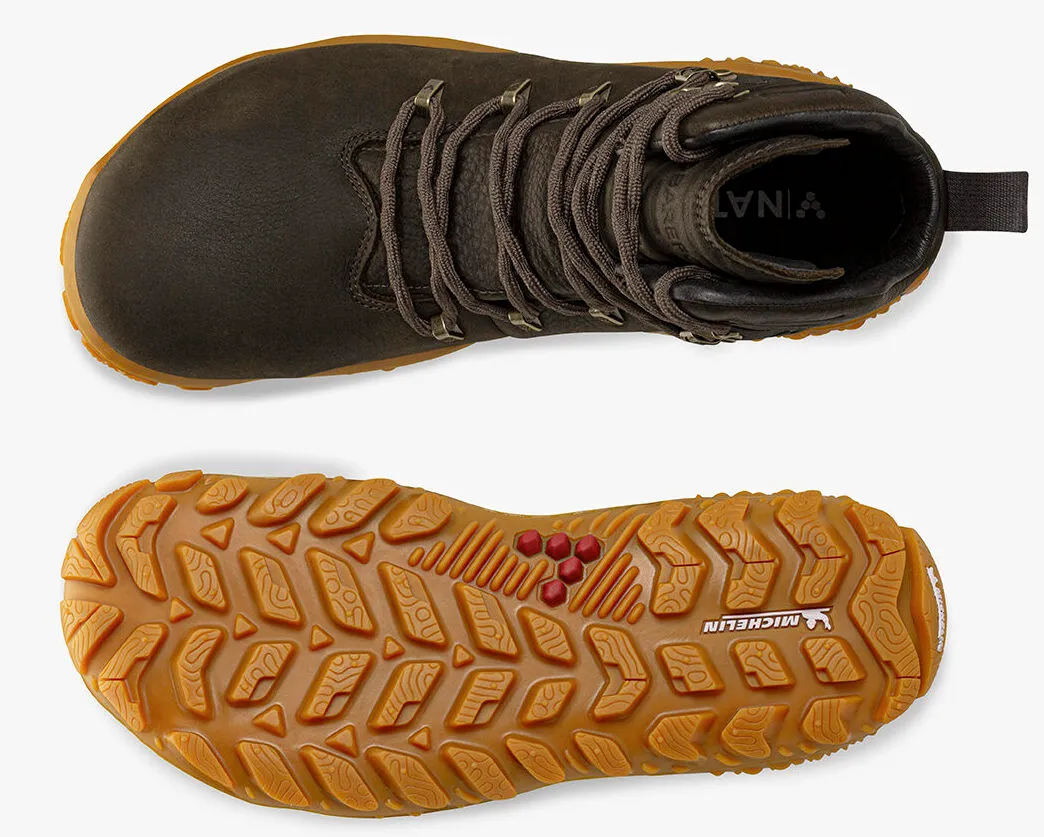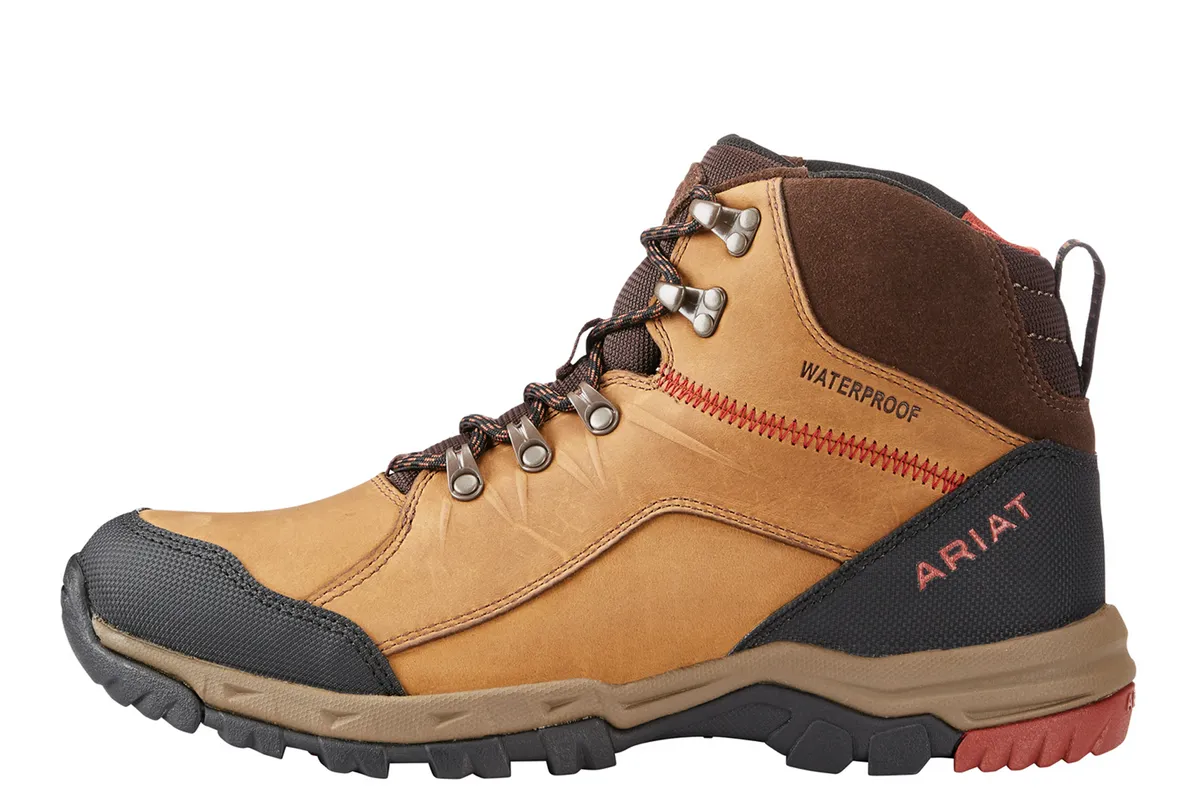We’ve tested and reviewed a few pairs of Vivobarefoot shoes and boots over the years and have developed a good understanding of what this minimalist shoe company is all about.
Their footwear is made to complement biomechanics – how muscles, bones, tendons, and ligaments work together to produce movement – and posture associated with walking or running barefoot. The result of this design paradigm is series of lightweight shoes and boots that are wide, extremely flexible, and thin-soled.
My experience of testing Vivobarefoot footwear for BBC Countryfile Magazine has always been positive, so I was excited to test out one of their latest models, the Tracker Forest ESC.
Vivobarefoot launched the Tracker Forest ESC in May 2021, describing it as their ‘most advance hiking footwear’ to date. Over the past few weeks, I’ve had the chance to test the boot out in all sorts of weather and on a range of terrains, from wet and muddy forest trails and rocky hills to puddle-strewn city streets. Read on to see how it fared.
Best walking boots tested
From tough leather hiking boots to lightweight footwear built for speed, there’s a boot out there for you somewhere – whether you’re an ambler, rambler, trekker or speed-hiker. Here we test a selection of the best boots on the market.
Tracker Forest ESC review
The Tracker Forest ESC’s most striking feature has to be the Michelin ESC sole, and it’s this that really differentiates the boot from other Vivobarefoot footwear. The W-shaped rubber lugs are multi-directional and a decent depth (7mm), offering good grip out on the trail. Overall, they performed well on most terrains, though I did experience a bit of slip on wet, slanting rocks (note: this type of terrain is the ultimate test for boot grip, and only the most aggressive lugs can hold securely without some sort of slip).

Staying true to the barefoot philosophy, the sole is flexible and, beneath the lugs, very thin, allowing your foot to ‘feel the ground’. For walkers not used to barefoot boots, this may feel a little unusual to begin with, but for barefoot converts (and those wishing to be converted), it’s a liberating feeling and all part of Vivobarefoot’s ambition to enhance our connection with the landscape.
The fit is wide, another trait of barefoot shoes, allowing your toes to spread out. According to barefoot walking and running advocates, science suggests that this improves your stability and balance – out in the field (and city, forest and mountain), this rings true, too. Unlike some more sturdy hiking boots, the Forest Tracker ESC instils a sense of confidence on uneven terrain. The combination of the wide fit and flexible sole makes it easy – and enjoyable – to move quickly and freely through most landscapes.
Like most Vivobarefoot footwear, the Forest Tracker ESC is really breathable. This is down to the ‘sandwich mesh lining’ on the inside of the boot, which allows air to move through the pores of the leather outer. In dry conditions, this is yet another feature that promotes freedom of movement and a general sense of comfort on the trail.

So, the Forest Tracker ESC boots are light, comfortable and breathable. But are they tough enough to cope with wet weather and rough terrain?
According to Vivobarefoot, the Forest Tracker ESC has been designed to cope with ‘the most extreme forest and off-road conditions our planet has to offer’. In the same breath, the boot specification reveals that ‘the Tracker Forest ESC does not have a traditional waterproof membrane’, and instead it puts ‘breathability and weather resistance at the centre of the product performance experience’. For those wishing to buy this boot, closer attention should be paid to the latter claim.
The boots are not waterproof but they are water-resistant – in fact, if such a category existed, I’d say they fall somewhere between the two. The boot’s Wild Hide leather (from free-roaming cattle sourced from small-scale farmers) ensures they cope well with periods of rain and can handle long stretches on muddy, puddled trails without water seeping in. However, unlike truly waterproof boots, they can't be relied upon in long, wet grass and ankle-high river crossings.
As for their toughness, again, the Forest Tracker ESC doesn't offer the same level of impact protection as a traditional walking boot (if you stub your toe on a rock, you’re likely to feel it). The minimalist design of the boot also means your feet are likely to feel the cold in winter more readily than with a heavier duty boot. But, much like the thin sole, this is all part of the package – it's a boot that embraces the virtues of walking barefoot.
For such a light boot, I was impressed with ankle support, which is supple yet strong. The laces are really grippy (over weeks of testing they didn’t come undone once) and tie high around the ankle, offering additional security.
Vivobarefoot advise you treat the Forest Tracker ESC regularly with all natural Renapur Leather Balsam. When you are finished with your boots, you can send them back as part of the Revivo scheme where they’ll be revived and reconditioned by highly skilled craftspeople to extend their life as long as possible.
The Tracker Forest ESC is available in two colours: Bracken (brown) and Obsidian (black). The women’s and men’s versions share all the same features.
Facts at a glance
- RRP: £220
- Designed for: walking/hiking
- Fit: wide
- Weight: 550g
- Waterproofing: water resistant
- Colours: Bracken (brown) and Obsidian (black)
Also consider... Ariat Skyline Mid waterproof boot

If the barefoot style boot sounds too lightweight, and you prefer something that offers more substantial protection, consider this boot from Ariat.
The American brand was founded in 1993, and over the past three decades has evolved from a company focused on integrating athletic footwear technology into boots for equestrian athletes, to today’s far broader ambition to create “products for all types of outdoor and work environments”. Case in point is their Skyline Mid waterproof boot.
They’re comfortable, and like almost every boot on the market these days, they can be worn straight from the box. The sole (AST technology) comprises a gel-cushioned footbed, which feels great on your feet without being over-soft and suffocating. There is also a nice level of cushioning around the ankle and in the tongue of the boot; combined with the heal stabiliser, this offers comfortable support within the boot.
The boots feature a shock-absorbing midsole (EVA), which, coupled with the cushioned sole, performs well on rough ground such as rocky, rooted, hilly paths, as well as flat towpaths, riverbanks, and pavements. The boots aren’t too heavy either, which makes them suitable for warm, dry days.
The outsole (bottom of the boot) comprises a multi-directional traction design with a fairly standard lug height. The result is a good level of grip on wet rock and muddy ground. Extra wear protection around the toe and heal create an effective guard against abrasive rocks, stones and sharp vegetation.
The Skyline Mid upper is made of full-grain leather, which is the strongest, most durable leather, and largely regarded as the highest quality grade. As well as offering durability, it’s known for being water resistant. In practice, the boots are waterproof, but like a lot of the more supple boots on the market, they aren’t 100% waterproof in really heavy, sustained periods of rain, or when submerged in deep puddles.
The women’s version of the Ariat Skyline Mid waterproof boots shares many of the same features as the men’s model, though the colour and design varies slightly.

